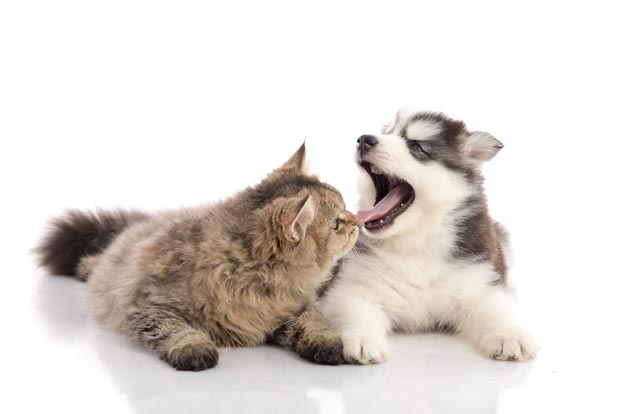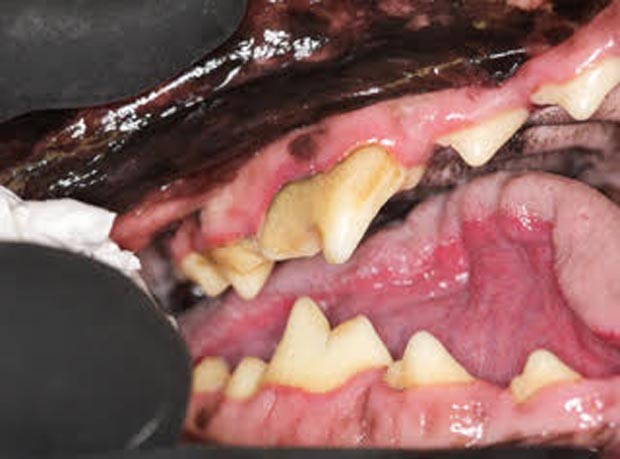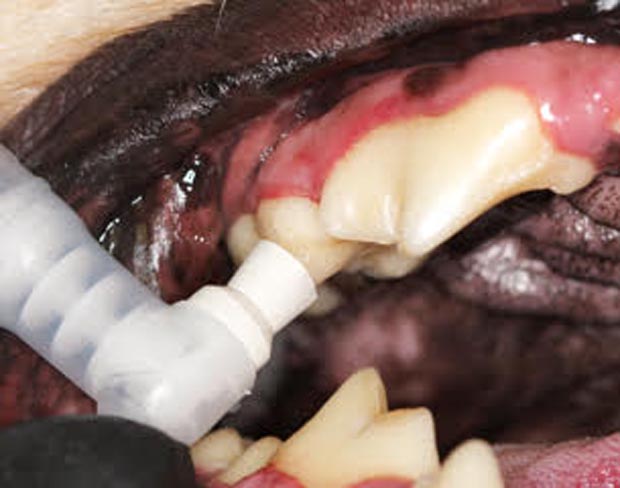
Photo by LalaLuluLala.
Halitosis, or the condition of having bad breath, is a common malady of dogs and cats. It can be a sign of gingivitis and can also be a sign of a more serious problem called periodontal disease. When left untreated, your pet will experience severe pain in its mouth and the constant seeding of the bloodstream with these bacteria over years can seriously affect internal organs like the liver, kidneys and heart.
The cause of halitosis is aerobic bacteria, and lots of them. In the mouth, these bacteria are known as biofilms. The total count of bacteria in the mouth is in the billions, but that shouldn’t be any surprise when you consider the warm and moist environment of the oral cavity, an environment conducive to bacterial growth. To add to this are the multitudes of nooks and crannies among the teeth and gums for bacteria to hide and propagate.
In addition to aerobic bacteria, there are millions of anaerobic bacteria. They do not need oxygen to cause their odor, and they hide deep in the gums where there is no oxygen (oxygen is toxic to them).
The bacteria that cause halitosis are treated in several ways. First, the teeth must be cleaned of plaque and tartar under the gum line where the bacteria reside. As a part of this cleaning process, the mouth is flushed with an antibacterial solution. Then, the enamel of the teeth is polished in order to smooth them out so that there are fewer areas for the bacteria to adhere to. A final step is to put fluoride on the teeth.
Oral antibiotics are commonly used when there is significant pathology of the teeth. We tend to use the ones that are effective against the aerobic as well as the anaerobic bacteria. Most owners notice an immediate improvement in the halitosis once these antibiotics are administered. Remember that they’re a temporary measure used to prepare your pet for a proper cleaning of the teeth under the gum line.

In this first picture, you can see the plaque on the teeth. Notice also the inflammation along the top of the tooth. This is gingivitis, and underneath this is where the bacteria reside in great numbers.

After a thorough cleaning and polishing, shown here, the teeth look dramatically better.
After this cleaning, brush your pet’s teeth, if possible. There is also a prescription diet called T/D (it stands for “tartar diet”), manufactured by Hill’s, that helps slow down the recurrence of plaque. Enzyme chews can also help slow the progression.
When pets’ teeth are professionally cleaned early in life, when there is no gingivitis, and the cleaning is performed under veterinary supervision, we can prevent gingivitis before it becomes a problem and halitosis is present.
Treatment started early in life is the key to prevention. Our website has substantial information on this commonly overlooked and painful condition of the mouths of dogs and cats.

